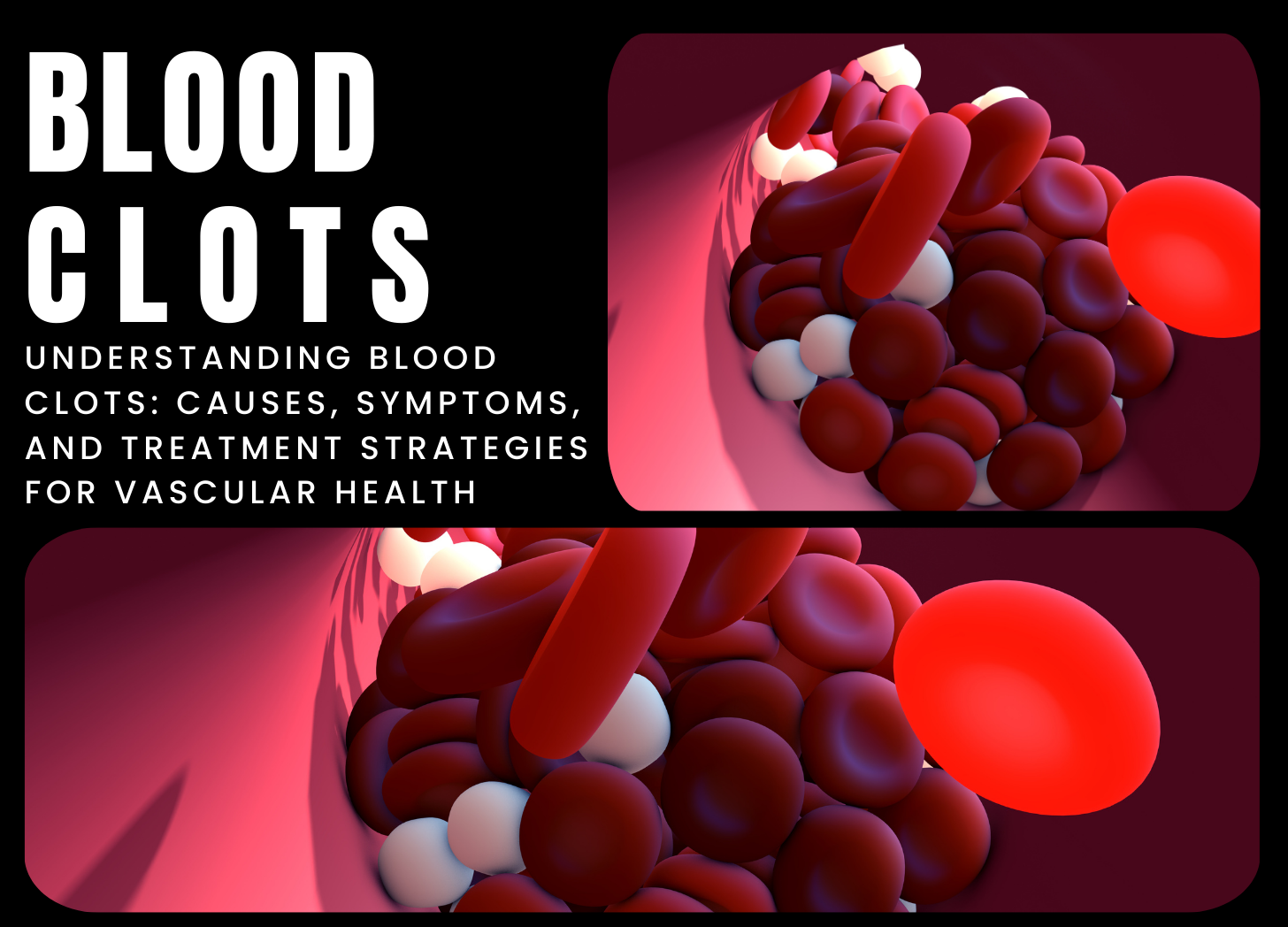Contact Us
Contact Us

Blood clots, also known as thrombi, are gel-like clumps of blood formed when blood components such as platelets and fibrin congeal to prevent bleeding at the site of a blood artery lesion. While blood clotting is a normal and necessary process for wound healing and preventing excessive bleeding, irregular clot development within blood vessels can cause major health problems. Blood clots can form in both arteries and veins and may be caused by a variety of underlying illnesses, lifestyle factors, or medical procedures.
The most common types of blood clots are arterial and venous clots. Arterial clots often occur in arteries that carry oxygen-rich blood to organs and tissues, and they are frequently associated with disorders such as atherosclerosis (artery narrowing and hardness), atrial fibrillation (irregular heart rhythm), and arterial damage. Arterial clots can cause major complications such as heart attacks, strokes, and peripheral artery disease (PAD). Venous clots, on the other hand, originate in veins and are frequently linked to venous stasis (reduced blood flow), vascular damage, or hypercoagulable conditions. Venous clots can cause illnesses like deep vein thrombosis (DVT) and pulmonary embolism (PE), which happen when a clot breaks loose and travels to the lungs.
The symptoms of blood clots vary according to their location, size, and severity. Chest pain, shortness of breath, abrupt weakness or numbness in the face, arms, or legs, slurred speech, or trouble speaking or understanding speech (indicating a stroke) are all common signs of arterial clots. Venous clot symptoms might include pain, swelling, warmth, and redness in the affected limb (usually the leg in cases of DVT), as well as sudden start of chest pain, rapid heartbeat, coughing up blood, or difficulty breathing (indicative of PE).
Blood clots are frequently diagnosed using a combination of medical history, physical examination, and diagnostic techniques such as ultrasound imaging, computed tomography (CT) angiography, magnetic resonance imaging (MRI), or blood tests that detect levels of clotting factors and clot formation markers. Early detection and treatment of blood clots is critical for avoiding complications and lowering the risk of life-threatening events such a heart attack, stroke, or pulmonary embolism.
The kind, location, and severity of a blood clot determine its treatment, which may include drugs, medical procedures, or surgical operations. Anticoagulant drugs such as heparin, warfarin, or direct oral anticoagulants (DOACs) are frequently used to prevent future clot formation and lower the risk of clot propagation or recurrence. Thrombolytic therapy can be used to quickly dissolve severe or life-threatening blood clots. In some circumstances, medical interventions such as thrombectomy (surgical removal of a clot) or vena cava filter installation may be required to effectively manage blood clots.
In addition to medical treatment, lifestyle changes such as keeping a healthy weight, getting regular exercise, avoiding extended immobility (particularly during lengthy flights or periods of bed rest), and quitting smoking can help minimize the risk of blood clots. Individuals with underlying medical disorders or risk factors for blood clots may benefit from preventive interventions such as compression stockings or anticoagulant therapy to reduce the likelihood of clot development.
In conclusion, blood clots are gel-like clumps of blood that can form within blood vessels and cause major health consequences if not managed. While blood clots can form for a variety of reasons, quick detection and treatment are critical for avoiding complications and lowering the risk of life-threatening events like a heart attack, stroke, or pulmonary embolism. Understanding the causes, symptoms, and treatment options for blood clots allows people to take proactive efforts to preserve their vascular health and avoid clot-related consequences.
References:
1.Centers for Disease Control and Prevention. (2022). Blood Clots. Retrieved from https://www.cdc.gov/ncbddd/dvt/index.html
2.American Heart Association. (2022). About Blood Clots. Retrieved from https://www.heart.org/en/health-topics/venous-thromboembolism/about-venous-thromboembolism-vte
Post a Comment